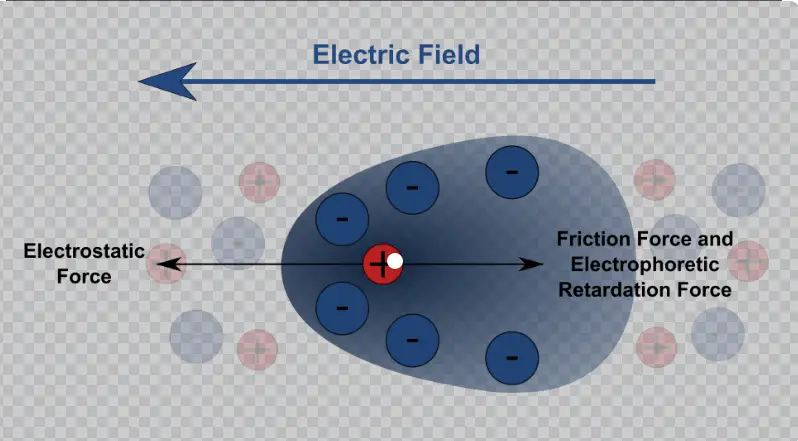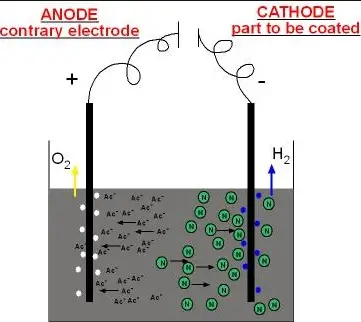Electrotherapy offers a range of techniques that harness electrical energy to facilitate healing and beauty treatments. Among these, cataphoresis and anaphoresis stand out as specialized methods used to enhance the delivery of medicinal agents through the skin using electric current. Each technique leverages the principles of ion movement to provide targeted therapeutic effects.
Cataphoresis involves the movement of positively charged ions into tissues for therapeutic benefits, primarily used to reduce inflammation and pain. Conversely, anaphoresis uses negatively charged ions to achieve similar effects but is particularly beneficial for cleansing and hydration of the skin. These methods are pivotal in dermatological treatments, physiotherapy, and aesthetic procedures.
These techniques not only cater to medical needs but also offer applications in skincare and sports medicine. By understanding their fundamental differences and applications, patients and practitioners can better choose the appropriate method for specific conditions or desired outcomes.

Cataphoresis Explained
Basic Concept
Cataphoresis, also known as iontophoresis in some circles, is a therapeutic technique that uses a mild electric current to drive positively charged ions through the skin. The process involves applying a direct current to a medicated pad or electrode placed on the skin, which encourages the migration of ions into the body tissues. This method is particularly effective for targeted drug delivery where topical application alone might not reach deeper layers of tissue effectively.
How It Works
The operation of cataphoresis can be broken down into several straightforward steps:
- Preparation: The area of the skin where treatment is needed is cleaned and prepared with a conductive gel to enhance electrical contact.
- Medication Application: A pad soaked in the medicated solution is placed on the skin. The medication typically contains positively charged particles.
- Electrode Placement: An electrode connected to a direct current power source is attached over the pad.
- Current Application: A mild current is applied, causing the positively charged ions of the medication to be driven into the skin.
During the procedure, the positive pole (anode) of the electrode repels the positively charged particles of the drug, pushing them into the skin. The depth and extent of ion penetration depend on the current’s strength and the duration of the treatment.
Common Uses
Cataphoresis is widely utilized in both medical and cosmetic fields for its precision and efficacy in delivering treatment directly to affected areas. Some common applications include:
- Pain Management: Effective in treating pain associated with conditions like plantar fasciitis or tendonitis.
- Inflammation Reduction: Used to administer anti-inflammatory medications directly to the site of injury.
- Hyperhidrosis Treatment: Helps reduce excessive sweating by delivering medications that block sweat glands.
Anaphoresis Explained
Basic Concept
Anaphoresis, in contrast to cataphoresis, involves the movement of negatively charged ions into the skin using a direct current. This method is often employed in dermatological treatments to deeply cleanse the skin and prepare it for further therapeutic interventions. Anaphoresis is particularly favored for its ability to enhance the absorption of moisture and nutrients by altering the skin’s pH and increasing its permeability.
Mechanism of Action
The steps involved in anaphoresis are similar to those in cataphoresis but involve reversing the polarity:
- Skin Preparation: As with cataphoresis, the treatment area is cleaned and prepared.
- Application of Conductive Solution: A solution containing negatively charged particles is applied.
- Electrode Setup: The cathode, or negative pole, is placed directly over the treatment area.
- Current Activation: When the current flows, it drives the negatively charged ions into the skin.
This negative charge helps to open up pores, enhance cellular turnover, and promote a deeper cleansing effect than typical topical treatments.
Applications in Therapy
The use of anaphoresis is particularly beneficial in the following areas:
- Skin Cleansing: Deeply cleanses skin by removing impurities and improving oxygenation.
- Moisture Enhancement: Increases the skin’s ability to absorb and retain moisture.
- Pre-treatment Preparation: Prepares the skin for more intensive treatments such as chemical peels or microdermabrasion.
Comparative Analysis
Technical Differences
While both techniques use electrical currents, the key difference lies in the type of ions each one manipulates. Cataphoresis uses positive ions to push substances into the skin, whereas anaphoresis uses negative ions. The choice of polarity affects not only the type of substances delivered but also their movement direction and penetration depth.
Effects on Tissues
The effects on tissues can vary significantly:
- Cataphoresis tends to promote healing, reduce pain, and decrease inflammation by delivering specific medications directly to the affected areas.
- Anaphoresis primarily focuses on cleansing and hydration, making it ideal for improving skin texture and treating dermatological conditions.
Equipment Used
The equipment for both treatments includes a power source capable of delivering a steady direct current, electrodes, and medicated solutions or gels. However, the specific design and materials used in the electrodes can vary depending on whether positive or negative ions are being administered.
Benefits and Limitations
Advantages of Cataphoresis
Cataphoresis offers significant benefits, particularly in targeted therapeutic applications. Key advantages include:
- Enhanced Drug Delivery: Allows for the precise delivery of drugs directly to the affected area, increasing the effectiveness and reducing systemic side effects.
- Pain Management: Proven to be effective in managing chronic pain conditions by delivering anti-inflammatory medications and analgesics right where they are needed.
- Reduced Inflammation: Particularly useful in treating inflammatory diseases such as arthritis, where direct application can provide rapid relief.
Advantages of Anaphoresis
Anaphoresis, while similar in mechanism to cataphoresis, offers distinct benefits especially suited to dermatological and aesthetic treatments:
- Deep Cleansing: By changing the skin’s pH, it helps remove deeply embedded impurities, improving skin health and appearance.
- Enhanced Product Absorption: Prepares the skin to better absorb skincare products, making treatments more effective.
- Hydration Boost: Improves the skin’s moisture retention capabilities, which is beneficial for dry and dehydrated skin types.
Limitations and Considerations
While both techniques are powerful, they come with certain limitations that should be considered:
- Specificity of Use: Each method is suited for specific conditions and may not be universally applicable.
- Equipment Dependency: Requires specialized equipment and trained personnel to administer safely.
- Skin Sensitivity: Not suitable for all skin types, especially those with heightened sensitivity or certain skin conditions.
Practical Applications
Medical Treatments
Both cataphoresis and anaphoresis find their place in medical treatments where traditional methods may fall short:
- Drug Delivery: Cataphoresis is used in transdermal drug delivery for conditions like musculoskeletal pain or dermatitis.
- Dermatological Treatments: Anaphoresis is used to treat acne and other skin conditions by facilitating deep cleansing and medication penetration.
Beauty and Skincare
In the beauty industry, these techniques are revered for their ability to enhance the effectiveness of facial and skin treatments:
- Facials: Anaphoresis is often used in facials to cleanse the skin and prepare it for moisturizing treatments.
- Anti-aging Treatments: Both techniques can help in the absorption of anti-aging products, enhancing their efficacy.
Sports Medicine
Cataphoresis is particularly beneficial in sports medicine, providing relief and treatment for athletes:
- Injury Recovery: Helps in the fast recovery of sports injuries by reducing inflammation and pain.
- Muscle Soreness: Effective in treating muscle soreness post-exercise, speeding up the recovery process.
Safety and Side Effects
General Safety Guidelines
To ensure the safety and effectiveness of cataphoresis and anaphoresis, certain guidelines must be followed:
- Proper Training: Operators must be properly trained in the use of electrotherapy equipment.
- Equipment Maintenance: Regular maintenance of the equipment is essential to ensure safety and functionality.
- Patient Assessment: Prior to treatment, a thorough assessment should be conducted to identify any contraindications.
Possible Side Effects
While generally safe, the treatments can have side effects, which are typically mild and manageable:
- Skin Irritation: The most common side effect, usually temporary and mild.
- Redness and Swelling: Can occur immediately post-treatment but generally subsides quickly.
Precautions and Contraindications
Certain conditions and situations warrant caution or outright avoidance of these treatments:
- Pregnancy: Generally advised against unless specifically recommended by a healthcare provider.
- Pacemakers or Other Electronic Devices: Patients with these devices should avoid electrotherapy.
- Skin Conditions: Those with certain skin conditions or very sensitive skin may need to avoid these treatments.
FAQs
What is Cataphoresis?
Cataphoresis is a therapeutic technique that utilizes a direct electrical current to drive positively charged particles into the tissues. This method is often used in medical and cosmetic treatments to deliver medication, reduce inflammation, and improve skin conditions.
How does Anaphoresis work?
Anaphoresis operates by applying a negative electrical charge to drive negatively charged ions into the skin. It is commonly used for facial cleansing, moisturizing treatments, and to enhance the absorption of skincare products into deeper layers of the skin.
What are the main uses of Cataphoresis and Anaphoresis?
Cataphoresis is primarily used to treat inflammatory conditions, manage pain, and deliver drugs through the skin. Anaphoresis is utilized in dermatology to prepare the skin for further treatments, cleanse pores, and hydrate the skin effectively.
Are there any side effects associated with Electrotherapy?
While generally safe, electrotherapy techniques like cataphoresis and anaphoresis can cause mild side effects such as skin irritation, redness, and in rare cases, burns if not administered correctly. It is crucial to follow safety guidelines and consult with a professional.
Conclusion
Cataphoresis and anaphoresis offer valuable solutions for both medical and aesthetic concerns, utilizing the power of electrical currents to enhance treatment effectiveness. As electrotherapy continues to evolve, these techniques remain integral to modern therapeutic practices, providing tailored treatments that address specific health and beauty needs.
The choice between cataphoresis and anaphoresis should be guided by the specific conditions and outcomes desired, emphasizing the importance of professional guidance in selecting and applying these advanced therapeutic techniques.

